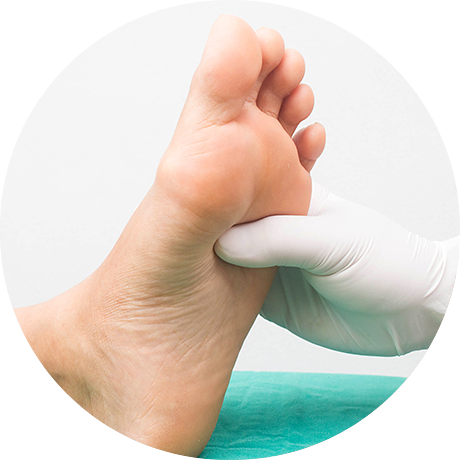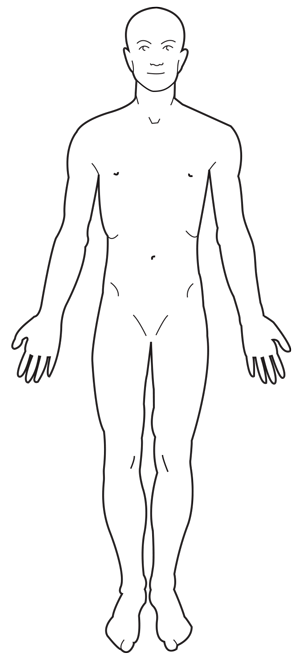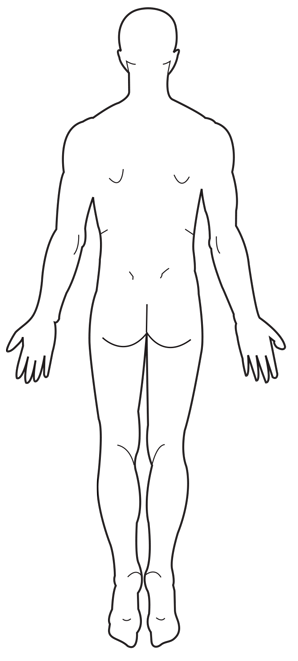
What could it be?
Dr. Paul Murphy, Pain Consultant, St. Vincent's Hospital, Dublin, speaking:
The International Association for the study of pain defines "Pain as an unpleasant sensory and emotional disorder, due to actual or potential tissue damage or expressed in terms of such damage”. And that's a very important definition because it lets us see that, whilst it's certainly an unpleasant sensation, there is no need for an abnormal result, no need for an abnormal scan or an MRI and individuals can certainly experience pain, in the presence of normal investigations.Acute pain and chronic pain are quite different (quite different) entities and most of us are quite familiar with acute pain, it's what I would often term good pain or useful pain, it lets us know that something is wrong, for example if we sustain a leg injury or a fracture or have an acute appendicitis, we're aware of this acute pain as a warning sign and know something is wrong and we can fix it. Chronic pain on the other hand is a useless pain, it doesn't serve any useful function in many ways it can be considered as a primary, a disease or a legion within the nervous system.
Most sources will consider that chronic pain actually begins at three months and this isn't just a number that we pluck out of the sky. At three months and many studies demonstrate that there are changes both within the function and within the structure of the nervous system occurring.
Neuropathic pain or nerve pain is the result of a primary legion or damage within the nervous system and it's a very specific subtype of chronic pain. Characteristically individuals will experience a range of abnormal pains such as; shooting, burning, electric shock like pain or a whole range of other abnormal sensations.
Nerve pain has a major impact primarily on the individual but also on family members and society as a whole. It can often be a very difficult condition to treat and diagnose and therefore very early and accurate diagnoses for the individual is critically important. We've changed our clinical approach to pain in recent years following the declaration of Montreal. We now consider chronic pain to be a disease entity in its own right, and as a result of this we need to treat it as specific disease, much like any other disease process. This has led us to target not only the specific neurological problems, with pharmacological and other approaches, but also to identify the impact that this has on a psychosocial level with a patient and therefore helped us to embrace the input of clinical psychology, occupational therapy and other services.
There are a number of challenges with respect to chronic pain, these include challenges to the medical profession, to patients and to society as a whole. Primarily amongst these is recognition that this is a specific disease, which affects a large proportion of the Irish population. We as the medical profession need to be able to recognise and identify this problem, to diagnose it accurately and to offer appropriate treatments. There are a number of changes I would like to see to improve the quality of life of Irish chronic pain sufferers, primarily amongst these is a recognition amongst society as a whole that chronic pain is a disease and that sufferers of chronic pain, like sufferers of other disorders such as, diabetes and asthma and epilepsy, have a right to access a range of multidisciplinary services, to help treat their pain and improve their quality of life.
M-MPF-IE-07-20-0010 – July 2020
I would encourage people to visit the mypainfeelslike.ie website to find out more information and also to take the 'mypainfeelslike...' questionnaire'.
What could it be?
Thousands of Irish people suffer from chronic pain in their daily life.2 Besides the pain itself, one of the main problems for the individual is that chronic pain is invisible to others at first glance, so friends, family, and colleagues assume everything is alright; that is unfortunate, because these individuals suffer not only physically, but also emotionally, psychologically, and socially. This is why increasing empathy and the understanding between doctors and patients are the goals of the 'mypainfeelslike...' initiative.We want to improve pain knowledge and raise awareness with both patients and doctors. Our aim is to equip patients with valuable background information and the right tools to identify and explain their chronic pain, such as the 'mypainfeelslike...' questionnaire', in order to play an active part in the diagnosis and treatment process.
For everyone suffering from pain, and especially from chronic pain, it may be important to know the reason behind this suffering. By clicking on certain parts of the body graphic below, you will get valuable background information about potentially related nerve pain conditions.

Acute Pain
Short-term Pain
Short-term pain is also known as acute pain, and it is pain that warns of a disease or a physical threat to the body. It is a vital signal of wounds, infections, burns and other injuries, and helps to protect the body as it encourages us to take care of the damaged area.Acute pain is intended to be temporary and may last anywhere up to 12 weeks depending on the underlying cause. It will usually disappear on its own once the underlying cause has been properly treated. Keep in mind, acute pain is a symptom while chronic pain is a disease.

Chronic Pain
Long-lasting Pain
Usually the feeling of pain (pain sensation) alerts to a disease or physical threat, also to protect the body from further damage. When the damaged area has healed, the feeling of pain should decrease and disappear. There are two main categories of pain: nociceptive and neuropathic. Nociceptive pain occurs when signals are sent to the brain following an irritation or injury (e.g. a sprained ankle). Neuropathic pain occurs as a result of damage to the nervous system.Chronic pain (long-lasting pain), however, can exist even after the injury has healed and in this case serves no useful purpose. The body incorrectly signals to the brain that there is pain, when in reality there is no longer any injury present. This chronic pain can last for months and even years. One of the most common examples of chronic pain is lower back pain (LBP)1. Read more about chronic pain here.

Nerve Pain
Neuropathic Pain
There are multiple events or conditions that cause nerve damage, which affects how pain signals are transmitted from certain parts of the body to the brain. If unrepaired, this damage can cause a type of long term or chronic pain that is called nerve pain / neuropathic pain. Read more about neuropathic pain here.
Localised Nerve Pain
Localised Neuropathic Pain
A high percentage of all nerve pain conditions are localised.3 Do you have shooting pain, burning pain, or stabbing pain that is limited to a certain part of your skin or body? Have you had some kind of infection or perhaps a surgery near that area? Both infections and surgeries can cause localised nerve damage that in turn causes long-term or chronic pain. This is called localised neuropathic pain (LNP) or localised nerve pain.Doctors might have a difficult time diagnosing LNP and its origins, so please be sure to tell your doctor if you had an infection or surgery and now have chronic pain in the affected area. Read more about localised neuropathic pain here.
-
References
1. Brevik et al. Survey of chronic pain in Europe: prevalence, impact on daily life, and treatment. Eur J Pain. 2006;10:287–333.
2. Raftery N Miriam et al, J of Pain 251, 2012, Vol 13 No2, 139 -145
3. Mick G., et al (2012). What is localized neuropathic pain? A first proposal to characterise and define a widely used term. Pain Manage 2(1), 71-77.








